I’m told to hold a juvenile American kestrel like I would a popsicle, a fitting comparison given how small this bird is — kestrels weigh 4 to 6 ounces, the smallest bird of prey in North America. It’s my first time holding a kestrel, and it’s a special moment after months of observing these birds from afar through our live kestrel cam.
“You hand someone a squeaking kestrel nestling to hold and their face just lights up,” says Jennifer Bridgeman, an intern with HawkWatch International, who had just given me the young bird. “It’s like a way of sharing a part of my passion with them in a way we can commonly understand.”
She’s right. I’m grinning ear to ear, and this is an instant highlight in my conservation career.
Lately I’ve been feeling overwhelmed by environmental challenges — “What can I do in the face of such big problems?” This tiny bird I’m holding is the medicine for such big worries. And Jennifer’s passion truly is contagious.
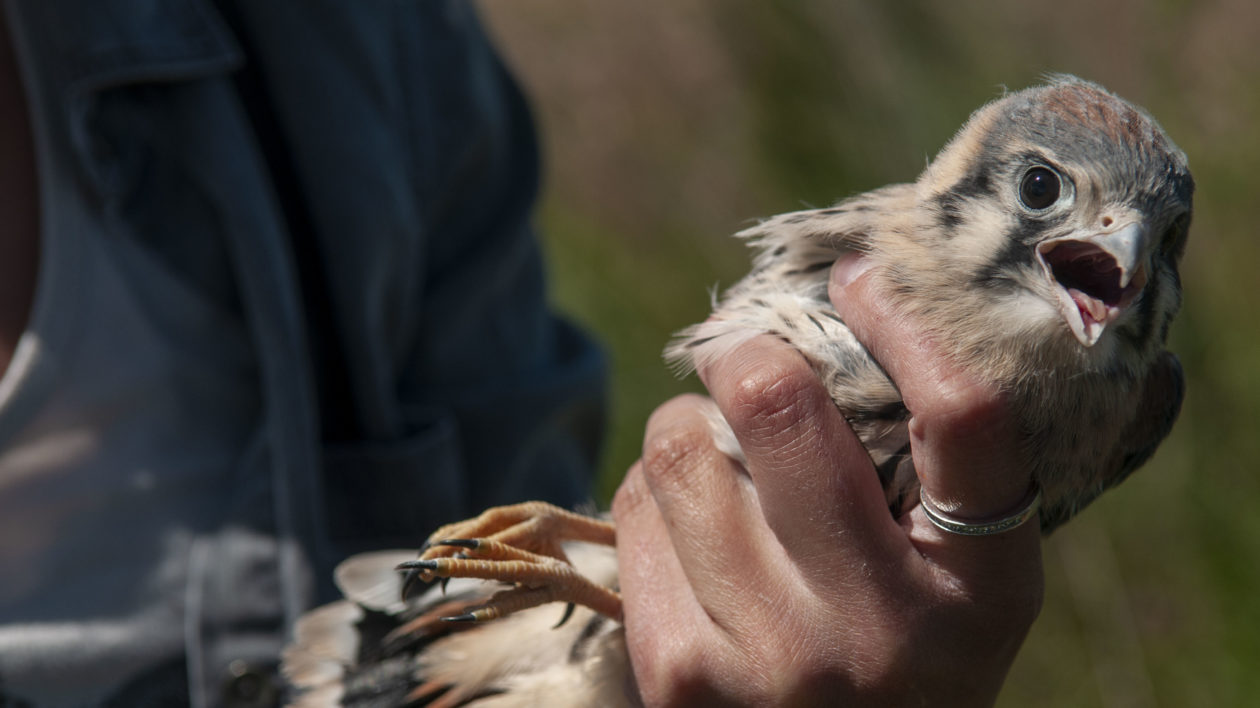
Keeping Up with The Kestrels
I was invited to join HawkWatch one morning at TNC’s Great Salt Lake Shoreland Preserve banding juvenile kestrels. By banding, we mean we’re affixing small metal alphanumeric bands around the kestrels’ legs — don’t worry, the bands aren’t constricting, and the birds get used to them quickly.
Banding is a vital tool that enables HawkWatch to monitor this species in the Great Salt Lake region. Imagine it as a “bird passport,” issued when the kestrels are nestlings and then “stamped” each time the kestrel is observed throughout its life. The bands allow for easy identification from afar with binoculars and spotting scopes, while eliminating the need to recapture a bird to know “who” it is and where it has been.
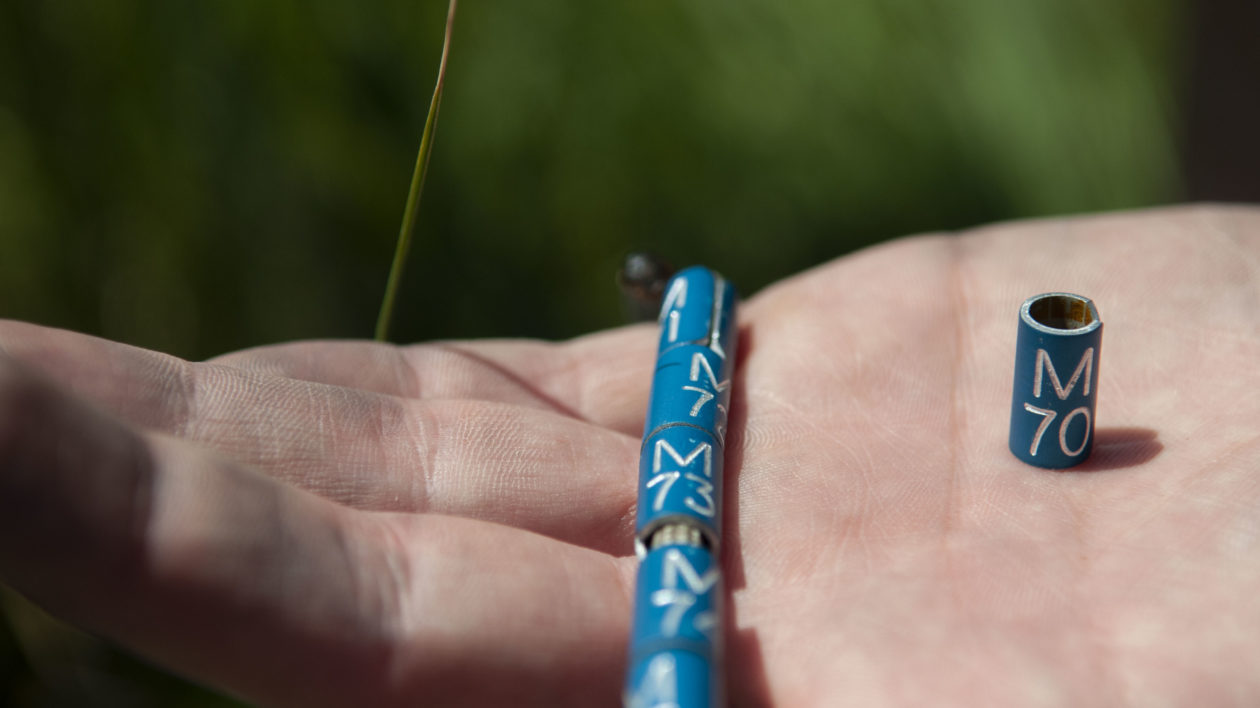
These “passport stamps” are data points that help us understand that kestrel’s movements and migrations throughout its life — and HawkWatch staff and volunteers have now banded about 2,000 kestrels since 2013. All these data points across a large population of a species of birds can tell us a lot about the ecological health of the region.
“Raptors, in general, are a good indicator of the health of the system,” says Jesse Watson, research biologist with HawkWatch. “American kestrels are a particularly good tool for understanding the system because they use all different types of habitats and have a diverse diet.”
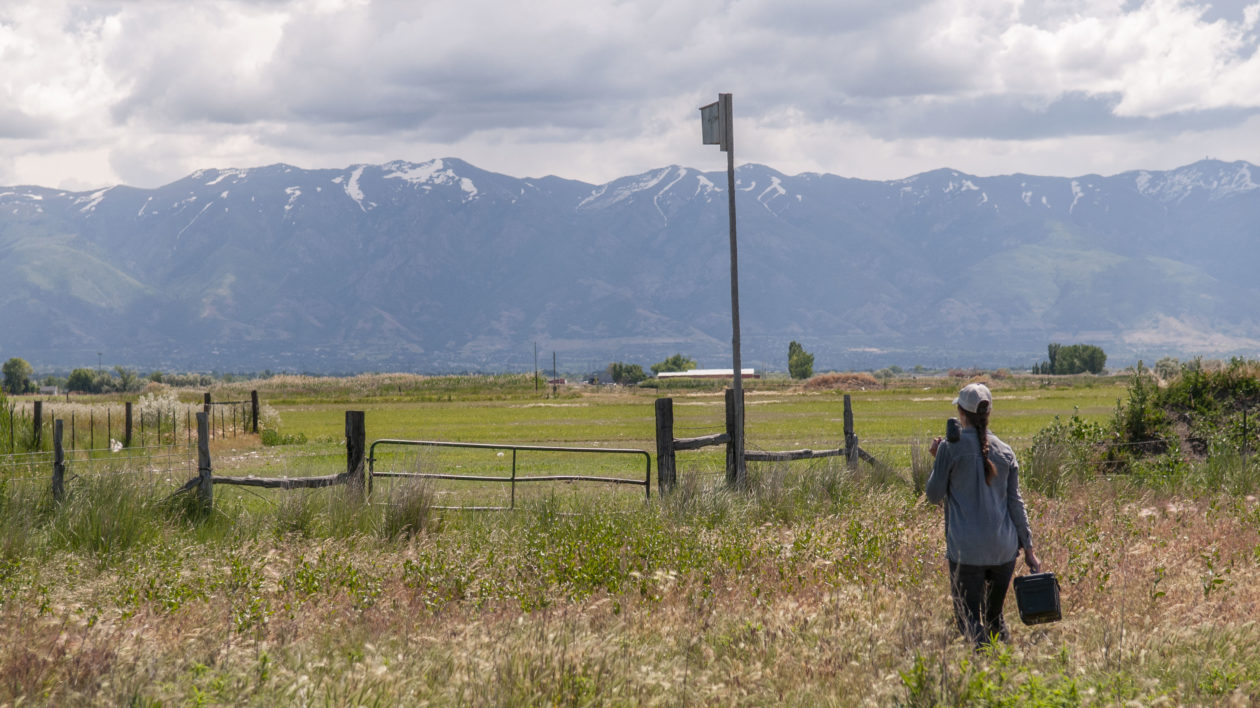
Population data collected by HawkWatch International raptor migration counts, and corroborated by other researchers, are indicating long-term declines of American kestrel populations across North America. The causes have yet to be determined, but potential factors include land-use change, predation, pollution and loss of or competition for nesting cavities.
The Great Salt Lake region is quickly changing — development is encroaching on traditional kestrel habitat. The hearty and adaptive kestrel seems to be taking the changes in stride, and you can find kestrels across various habitat types in the region including: wildland, agriculture and urban.
But it’s too early to draw any conclusions, says Jesse. We need additional research to better understand these declines and guide conservation efforts. That’s why it’s so important that we’re out here banding. And there’s another secret weapon in HawkWatch’s efforts to continue monitoring these species for years to come.
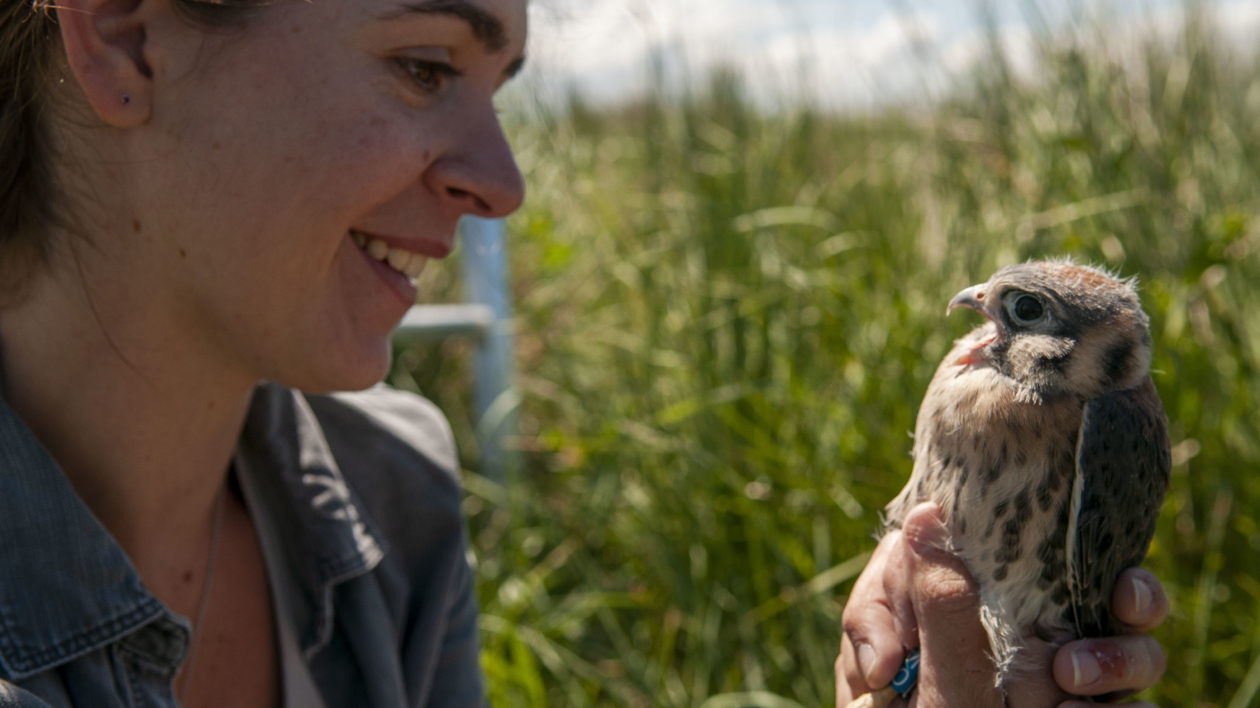
This Work Is Made Possible by Citizen Scientists
Each spring, HawkWatch citizen-science volunteers monitor a large network of kestrel nest boxes placed in the diverse landscapes occurring along Utah’s Wasatch Front.
“This is not just something just HawkWatch or TNC is doing. It’s something everyone can be involved with,” says Jesse. “A few days ago, a citizen scientist sent me a picture of a banded kestrel they observed and we looked up the whole story of the bird from its band number: which box it came from and when it was banded. That’s a really cool data point that tells us a lot.”

Kestrels are very mobile, migrate and have large ranges — through citizen-scientist reports of banded individuals, HawkWatch is learning that many of the region’s kestrels tend to stay in the area and don’t migrate south in the winter. But the study area is so widespread that HawkWatch staff can’t be everywhere at once to keep an eye out for the banded kestrels and other birds.
TNC’s nesting box on our preserve outfitted with a live Web camera is easy to keep an eye on — I’ve been glued to it and watching our young kestrels ever since they hatched. But for every kestrel nesting box without a camera, someone is needed to monitor the birds.
“I can’t check 450 nesting boxes a week,” says Jennifer “We can collect much more data with citizen scientists.”
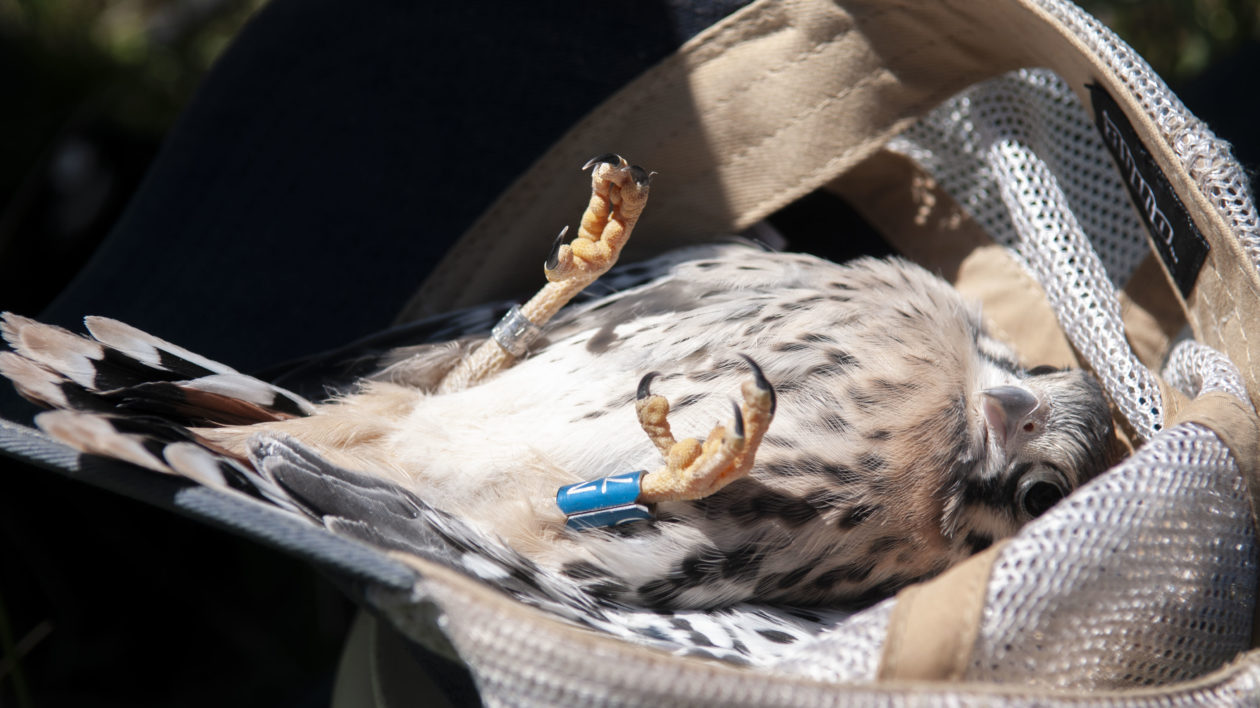
And after the banded juvenile kestrels fledge and fly from the nest — as the bird I’m holding is minutes or hours away from doing — it’s up to citizen scientists to keep a watchful eye out.
If you see one of the many birds that HawkWatch has banded is spotted, you can report it on their website. (Citizen scientists should note the sex of the bird, color of the band, which leg it is on, the alphanumeric code, the date, and the location where you saw the bird — either GPS coordinates or nearest cross streets.)
And beyond Utah, citizen scientists can record kestrel sightings from across North America. HawkWatch participates in the American Kestrel Partnership — a network of independently managed nestbox monitoring programs to generate data and model relationships between nesting performance and environmental factors at the continental scale.
As I chat with Jennifer, she remembers back on the first spring she volunteered with HawkWatch. She was tasked with monitoring 20 nesting boxes and was saddened to learn that none of those boxes had nesting kestrels in them. A HawkWatch staff member found another box with a nesting pair that Jennifer could monitor, and she recalls the first time she traveled out to the box to band a kestrel, holding one for the first time:
“That magical moment for me has helped me better understand and appreciate why people volunteer for this project. Moments like these furthered my passion for this work and gave me motivation to keep going.”
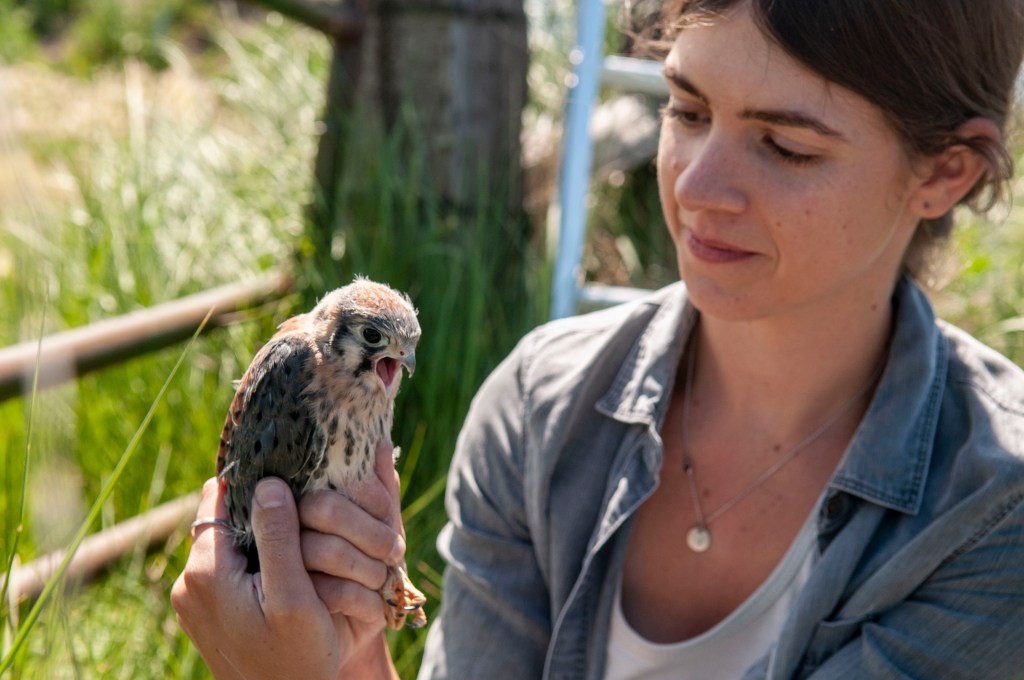



My husband built a Kestrel house 16 years ago to put up on our newly owned 2.8 acre property in NJ. We had no luck with any kestrels b/c starlings kept trying to build a nest in the kestrel house. We gave up, took the house down & it has been sitting in our garage for 16 years. Should we try again? Or will the same thing happen?
A great care,& adaptations for securing these heavenly skyliners alogwith other terrestrial & aquatic animals has great charm & it helps to visualise the aesthetics & miracles of nature
Kestrel are not the smallest birds of prey in North America. Elf Owl weigh only 1.4oz.
Brian, ornithologists tend to use a definition of “birds of prey” to specifically refer to those that have a diet of vertebrates whereas the elf owl’s diet is made up of insects.